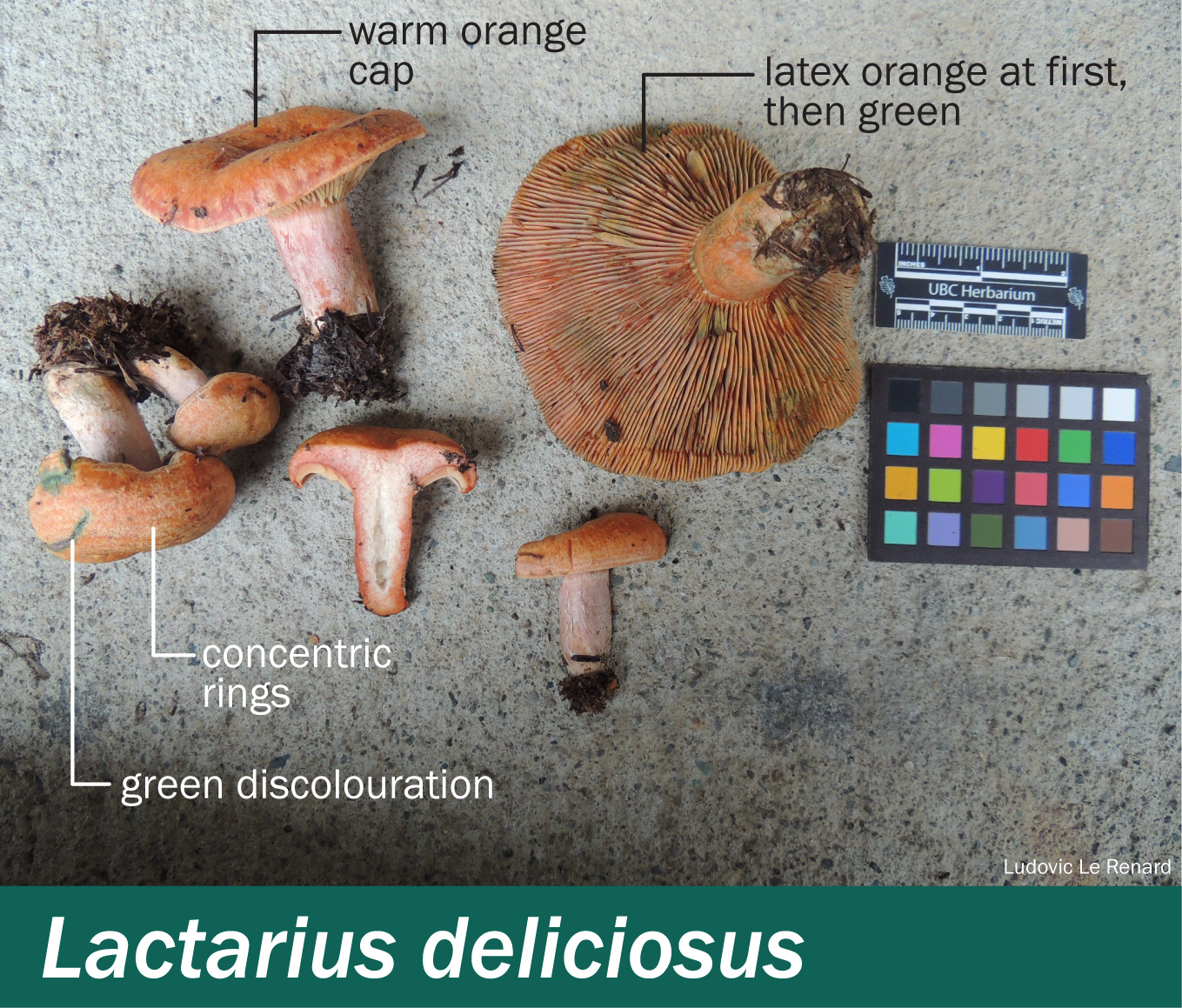Lactarius deliciosus sensu Hesler and Smith — Western saffron milk cap
Odour: Indistinct
Taste: Slightly acrid. (Briefly taste a pea-sized piece then spit it out.)
Cap: 5–15 cm in diameter, convex at first, expanding and developing a central depression. The colour is pinkish orange with concentric rings of lighter fibrils. Where bruised, the cap turns green. The surface is smooth, fibrillose when dry, slightly viscid when wet. Flesh of cap and stem are crisp when young and the mushroom breaks with a snap. The flesh is whitish with reddish-orange lines and flecks toward the outside where latex is being produced.
Gills: Crowded, attached or slightly decurrent, pinkish tan to orange, staining green, fragile.
Latex: Orange then staining green.
Stem: 3–4 cm long x 1.5–2 cm wide, straight and cylindrical or narrowing towards the base, hollow. The colour is initially mottled white and light pinkish orange and it becomes darker orange with age. If bruised, it turns green.
Ring or veil: None.
Cup: None.
Spores: 8–11 x 7–9 µm, with net-like, interconnected ridges.
Habitat: In coniferous forests. Ectomycorrhizal.
Geographical distribution: May be restricted to western North America. Due to confusion in the delimitation of similar species, the range extent of individual species is still unclear.
Treatment11: Contact your regional Poison Control Centre if you or someone you know is ill after eating milk caps. Poison centres provide free, expert medical advice 24 hours a day, seven days a week. If possible, save the mushrooms or some of the leftover food containing the mushrooms to help confirm identification.
Poison Control:
British Columbia: 604-682-5050 or 1-800-567-8911.
United States (WA, OR, ID): 1-800-222-1222.

